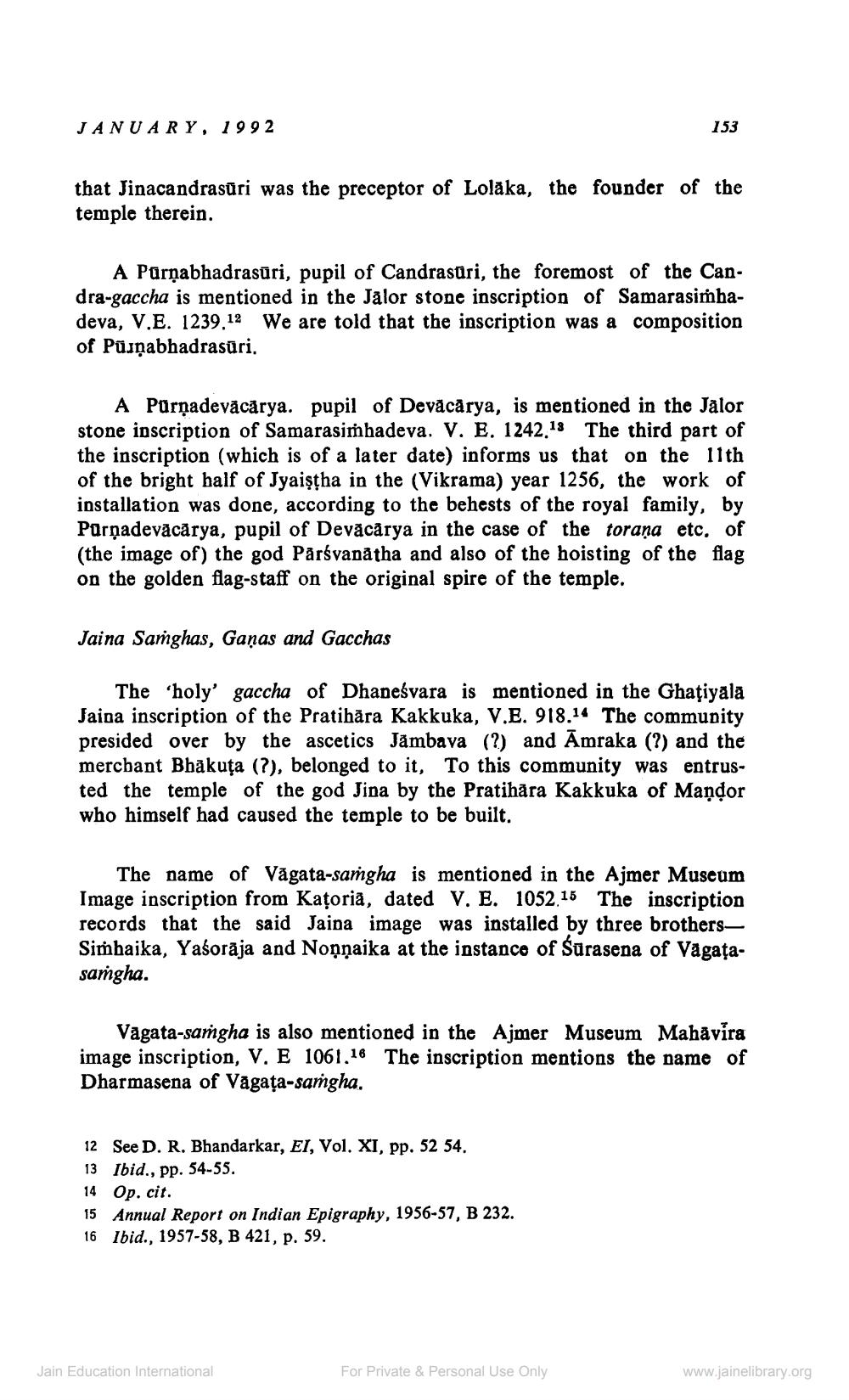________________
JANUARY, 1992
153
that Jinacandrasűri was the preceptor of Lolaka, the founder of the temple therein.
A Parṇabhadrasūri, pupil of Candrasäri, the foremost of the Candra-gaccha is mentioned in the Jalor stone inscription of Samarasimhadeva, V.E. 1239.12 We are told that the inscription was a composition of Püīņabhadrasūri.
A Purnadevācārya. pupil of Devăcărya, is mentioned in the Jalor stone inscription of Samarasimhadeva. V. B. 1242.18 The third part of the inscription (which is of a later date) informs us that on the 11th of the bright half of Jyaiştha in the (Vikrama) year 1256, the work of installation was done, according to the behests of the royal family, by Purnadevācārya, pupil of Devācārya in the case of the torana etc. of (the image of) the god Pårsvanátha and also of the hoisting of the flag on the golden flag-staff on the original spire of the temple.
Jaina Samghas, Ganas and Gacchas
The holy' gaccha of Dhaneśvara is mentioned in the Ghatiyala Jaina inscription of the Pratihāra Kakkuka, V.E. 918.14 The community presided over by the ascetics Jámbava (?) and Āmraka (?) and the mercbant Bhakuta (?), belonged to it, To this community was entrusted the temple of the god Jina by the Pratihāra Kakkuka of Mandor who himself had caused the temple to be built.
The name of Vāgata-samgha is mentioned in the Ajmer Museum Image inscription from Katoria, dated V. E. 1052.15 The inscription records that the said Jaina image was installed by three brothersSimbaika, Yasoraja and Nonnaika at the instance of Sūrasena of Vagatasamgha.
Vagata-samgha is also mentioned in the Ajmer Museum Mahåvira image inscription, V. E 1061.16 The inscription mentions the name of Dharmasena of Văgața-samgha.
12 See D. R. Bhandarkar, EI, Vol. XI, pp. 52 54. 13 Ibid., pp. 54-55. 14 Op. cit. 15 Annual Report on Indian Epigraphy, 1956-57, B 232. 16 Ibid., 1957-58, B 421, p. 59.
Jain Education International
For Private & Personal Use Only
www.jainelibrary.org




